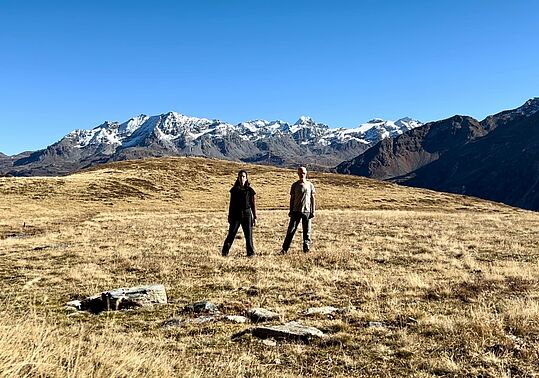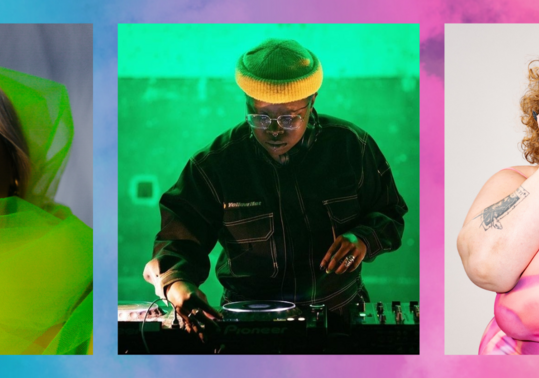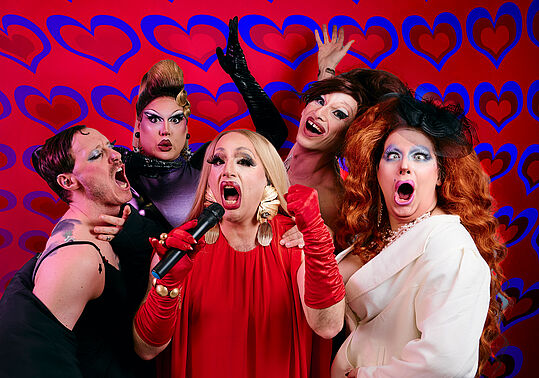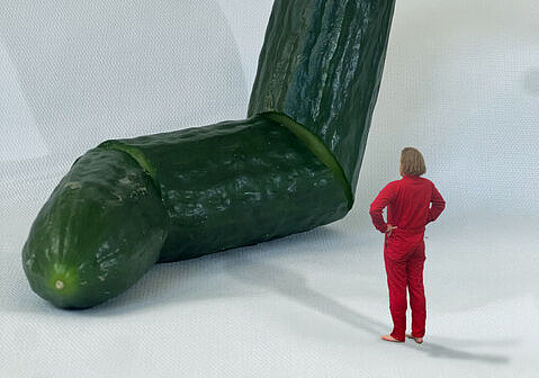Based on a poem
Dreamscraper is an explicitly feminist project, speaking from a female gaze and radically questioning visual habits. Why did you decide to take this approach?
Eszter Petrany: In this creation our gender ratio in favor of women is 7:2, sometimes there are six female performers on stage at the same time, therefore speaking from a female perspective was natural and unavoidable. Femininity is an essential layer of this piece, but we consciously wanted to avoid those overused, sometimes even cliché-like performative components which are often appearing in feminist pieces. To take the most obvious example, we use our bodies, our female figures, we play with sensuality and intimacy, but we don't address nudity itself for the sake of having naked bodies on stage. We are interested in depth, complexity, purity, and so many more, we wish to bring out different tones and colors throughout this piece. The fact that there are three dancers, a choreographer, an opera singer and two musicians who are all women, puts us into a situation where we can use our femininities as tools. When the chemistry is working and we all aim for the same results, this can be very exciting. Nevertheless, we are all humans and as I mentioned, the female aspect is one layer of the many. Also, our composer, Amir and our electronic musician, Adrian are trying to balance out our energies, thankfully they are both adding a lot to Dreamscaper and to the work around the collective.
Dreamscraper is based on a text by Forough Farrokhzad. Can you tell us more about the text and the author, and how you incorporate the reading of the text into your performance?
Eszter Petrany: The text - which is a poem - was coming from our composer, Amir A. Ahmadi, who is also Iranian, so he knew more about the author and he could relate to her imagery. Amir decided to use some of the lines of the poem as the lyrics of his music. We, dancers chose to take the poem and mix with our own texts, which were personal descriptions of what dance means to us (physically and emotionally). First it was only an experiment, because although our own texts were also quite lyrical here and there, they still had very clear, practical explanations, therefore it was interesting to mix it with a poem that is so rich in pictures and emotions. These mixtures then became units and we used them as scores, together with our maps for our spatial constellations. We often used microphone on our rehearsal to help each other with the personalized texts while improvising, so one person was dancing her "map" in space, while another one of us was reading the dancer’s text. That's how we created the solo parts. To jump back a little bit to the first question, Forough Farrokhzad is also noted to be a feminist poet and film director, but even she said that she never wrote anything with having in mind that she wants to create something feminist. It just happened to have a strong female tone and in her time and environment it couldn't be anything else but something that is labeled as "feminist". To quote her: "I believe that if those who choose art to express their inner self, feel that they have to do so with their gender in mind, they would never progress in their art." I think, in PUC creations we also aim for solutions, where the dramaturgical choices are not being forced or constrained. I find it very interesting and also touching, that Amir chose this poem and that he felt he could connect his music to these feelings.
You are quite a big team on stage, three performers, three musicians and both of you as artistic directors. How can we imagine your collaboration?
Eszter Petrany: Anna Possarnig is the artistic director of PUC, but she was not the artistic director of this piece. We are truly trying to function as a collective, which means that it's always clear, who is the artistic leader of the actual creation, however, generally we share our duties in a fluid, flexible way. We didn't say it out loud, but I would say that the artistic directors of Dreamscraper are Maria and Amir. It's true that the team became relatively big this time and we all feel that with bigger production comes bigger responsibility as well. Also, I personally feel like we got incredibly lucky with having so many wonderful people working on this production, from the costume-and set designers, through all the performers and creators to our light designer, that I really wish to bring out the best possible experience and result from this work. We still make many compromises, because that's just life and we are a young collective with very little support, in spite of that I think, Dreamscraper is a beautiful little milestone for us. I hope for many more opportunities like this to come!
You have now been able to work on your project for a year as part of HUGGY BEARS. How was this year in the mentoring program for you?
Maria Shurkhal: Looking back at this year, I must say that it was a truly transformative experience, however cheesy it may sound. Despite the isolation I gained much better understanding of the Viennese scene, met many wonderful mentors and artists. Among the things I valued most is the ability of Caro Madl and Philippe Riera to create a safe space for work and reflections for all the participants. I believe that in this year I could really get an insight into how our work might be viewed and perceived from “the outside” and which questions and responses it might stimulate. Definitely, it was a year of dialog and exchange that brought many fruitful ideas and visions.








